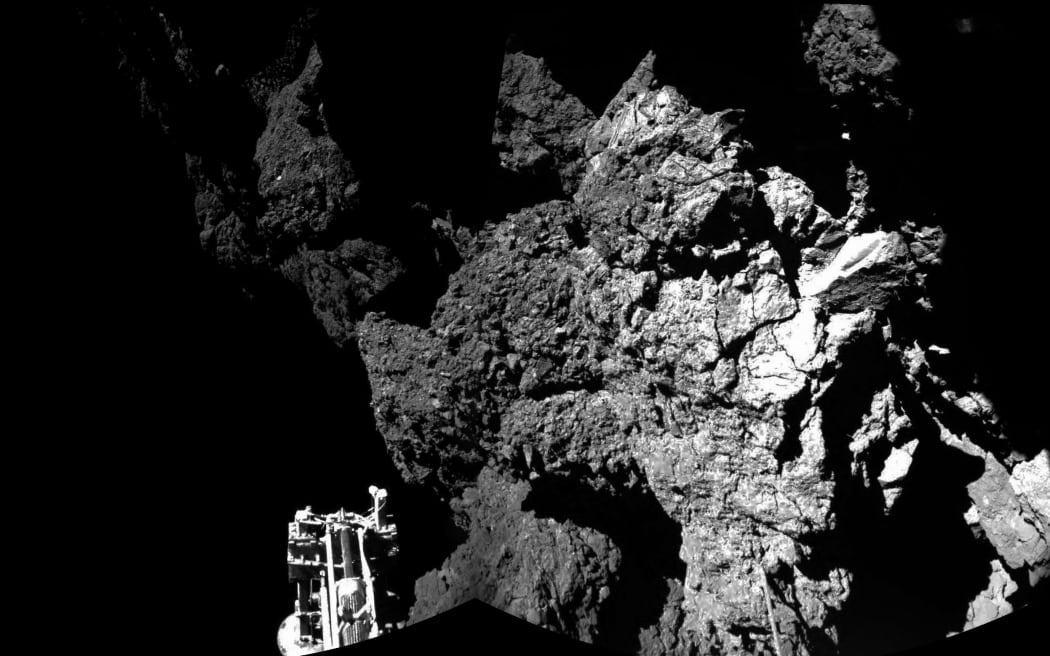European space probe Philae has woken up overnight after a months-long sleep as it hurtles towards towards the Sun on the back of a comet, the French space chief says.

Rosetta's lander Philae on the surface of Comet 67P. Photo: AFP / ESA / Rosetta / Philae / CIVA
"We received new signals from (Philae) for a period of two minutes, as well as 40 seconds' worth of data," said Jean-Yves Le Gall, president of the National Centre for Space Studies (CNES).
An account linked to the probe had tweeted its contact message:
Hello Earth! Can you hear me? #WakeUpPhilae
— Philae Lander (@Philae2014) June 14, 2015
The spacecraft aims to unveil the secrets of comets - pristine bodies of ice and dust that are believed to explain how the Solar System was formed.
The tiny lander hitchhiking on Comet 67P/Churyumov-Gerasimenko will describe what happens to it as it heats up on its journey through space.
Europe launched a new bid in May to communicate with Philae via its mothership Rosetta, which is in orbit around 67P.
Bumpy landing
The 100kg robot lab touched down on 67P on 12 November last year after a 10-year trek on Rosetta.
But instead of harpooning itself onto the dusty iceball's surface, Philae bounced several times before settling at an angle in a dark ditch.
It had enough stored battery power for around 60 hours of experiments, and sent home reams of data before going into standby mode on 15 November.
As 67P drew closer to the Sun, scientists hoped better light would recharge Philae's batteries enough for it to reboot, then make contact, and ultimately carry out a new series of experiments.
"Philae has woken up at 13 June 2228 Central European Time," the European Space Agency (ESA) spokesman Pal Hvistendahl told AFP.
The unexpected hibernation since last November - and the fact that the spacecraft is tucked safely beneath a cliff - mean it is poised to witness what could be a spectacular process at its most interesting time, the BBC reports.
That is because the spacecraft is hitchhiking just as the comet's orbit brings it nearer the Sun, with a predicted closest approach during August.
If it continues, it will be able to gather information about what's inside the comet as the gas jets grow and accelerate, and possibly even take pictures as parts of the surface break apart to form the tail.
One possibility is that the strangely shaped comet, which may be formed of two distinct bodies, will split in two as the Sun's rays intensify.
Comet 67P is 215 million kilometres from the Sun and 305 million kilometres from Earth, racing at 31.24 kilometres a second, according to ESA's website.
Rosetta and Philae have travelled an accumulated distance of 6.9 billion kilometres, it said.
By 13 August the comet will reach its closest point to the Sun before veering off again into the deeper reaches of space.
- AFP / BBC

